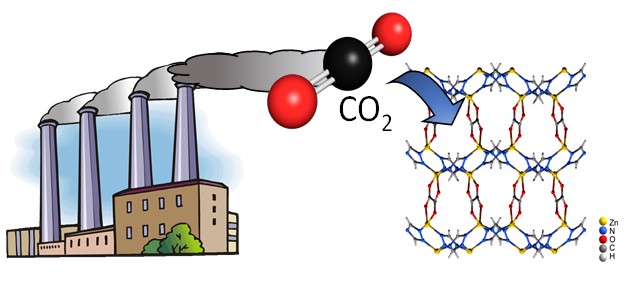
Scientists at the University of Ottawa, the University of Calgary, the University of Alberta and partner company Svante (Vancouver) have developed a material called CALF-20 that can be used to capture carbon dioxide from industrial combustion flue gases.
In their article “A scalable metal-organic framework as a durable physisorbent for carbon dioxide capture” published in Science, they demonstrate that the material can remove up to 95% of the CO2 emitted from cement manufacturing.
To learn more, we talked to co-author Dr. Tom Woo, Full Professor in the Department of Chemistry and Biomolecular Sciences at the University of Ottawa.
Can you tell us more about this material called CALF-20?
“CALF-20 is a Metal Organic Framework (MOF), a class of material that has long promised to allow for cost-effective CO2 capture from combustion gases when burning fossil fuels. CALF-20 is the first MOF to be scaled up (made in ton quantities) and used in the field.”
What are the results so far?
“Since January of 2021, that material has been capturing more than one tonne of CO2 per day at a cement-making plant run by LafargeHolcim.
“Although CALF-20 is not particularly remarkable in any one property important for industrial CO2 capture, it is the first material that ‘checks all of the boxes’ necessary for practical real-world use as a CO2 capture material. It captures CO2 effectively from real flue gases containing water and other contaminants that frequently poison similar materials; it is relatively inexpensive to produce in large quantities (hundreds of kilograms); and it is very durable and stable.”
What are the potential impacts of your research?
“We know that carbon capture utilization and storage (CCUS) will play a critical role in the world reaching net-zero emissions.
“The results of this study are likely to have a global impact not only for the cement-making industry, but also the oil and gas and the power industries because most of our electrical power still comes from fossil fuel combustion. All of these industries are looking to reduce their CO2 footprints and many companies also have net-zero greenhouse gas aspirations.
“This study significantly de-risks the adoption and development of large-scale CO2 capture technology.”
Corresponding authors: Pierre Hovington (Svante) Dr. Arvind Rajendran (University of Alberta), Tom K. Woo (University of Ottawa) and Dr. George K. H. Shimizu (University of Calgary). Jian-Bin Lin (University of Calgary) is the first author of this study.
For media inquiries:
Justine Boutet
Media Relations Officer
University of Ottawa
Cell: 613-762-2908
[email protected]
